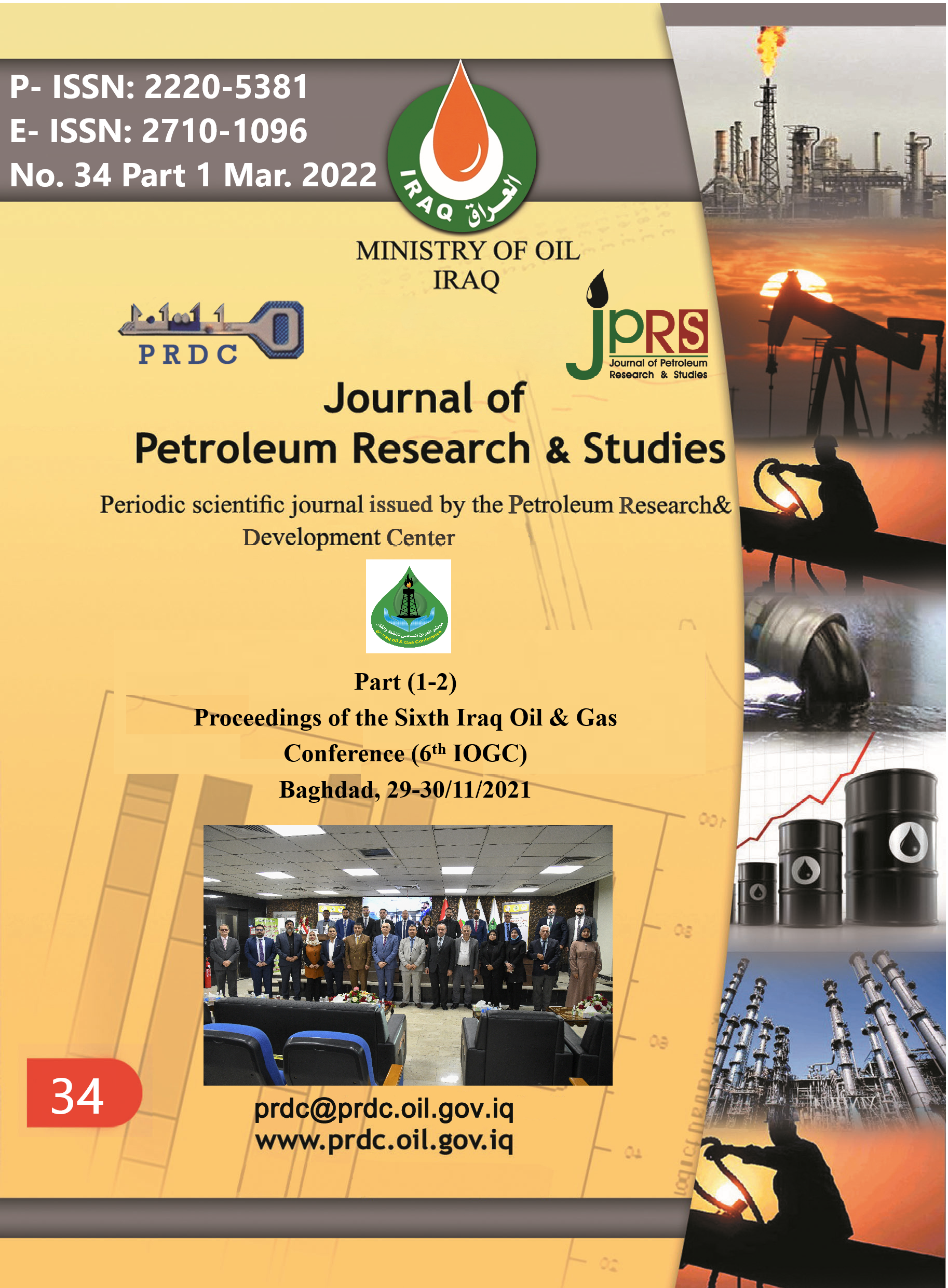Evaluation of Carbonate Formation using both Gas While Drilling and Nuclear Magnetic Resonance Log (Case study, An Oilfield Southern Iraq)
DOI:
https://doi.org/10.52716/jprs.v12i1.593Keywords:
Carbonate Formation, Gas While Drilling (GWD), NMR LogAbstract
Two wells close to each other (Well A and Well B) have been selected from the same oilfield in southern Iraq. Both wells were drilled through the Mishrif Reservoir, however, perforated within different sub-units. It was observed that one of the wells shows obvious flow naturally while the other did not notice any kind of flow.
The type of hydrocarbon interpretation by Gas while drilling method (GWD), the results confirmed that both of these wells were located in oil-bearing reservoir with comparable gas profiles.
However, petrophysical properties of the pore distribution and permeability using Neutron Magnetic Resonance (NMR) data in Techlog identified key differences in rock quality between the wells across the perforated intervals.
Reservoir quality reveal very wide differences in performance in spite of both wells are penetrating the oil bearing layers within Mishrif reservoir.
Keywords: Carbonate Formation, Gas While Drilling (GWD), NMR Log.
References
Aqrawi, A. A. M., Thehni, G. A., Sherwani, G. H., & Kareem, B. M. A. Mid‐Cretaceous rudist‐bearing carbonates of the Mishrif Formation: An important reservoir sequence in the Mesopotamian Basin, Journal of Petroleum Geology, 21(1), 57-82, Iraq, 1998.
Al-Ahmed, A.A., Organic Geochemistry, Palynofacies and Hydrocarbon Potential of Sargelu Formation (Middle Jurassic) Northern Iraq. (Unpublished), Ph.D. Thesis. University of Baghdad, 2007.
Al-Khafaji, A J., Hakimi M.H., Al-Ahmed A.A., Organic geochemistry characterization of crude oils from Mishrif reservoir rocks in the southern Mesopotamian Basin, South Iraq: Implication for source input and paleoenvironmental conditions, Egyptian Journal of Histology 27(1):117-130, 2018.
Ellis, L., Brown, A., Schoell, M. & Uchytil, S. Mudgas Isotope Logging (MGIL) assists in Oil and Gas Drilling Operations. Oil and Gas Journal, v.101, no.21, pp.32-41, 2003.
Beeunas, M. A., Baskin, D. K., & Schoell, M. Application of gas geochemistry for reservoir continuity assessment and identification of fault seal breakdown. South Marsh Island, 61, 6-10, 1999.
Pixler, B.O. Formation Evaluation by Analysis of Hydrocarbon Ratios, 43rd Annual Meeting SPE, Houston, n.2254, 1968
Haworth, J. H., Sellens, M. & Whittaker A. Interpretation of Hydrocarbon Shows Using Light (C1-C5) Hydrocarbon Gases from Mud Log Data, AAPG Bull.V.69, No.8, p.1305-1310, 1985.
Whittaker, A. & Sellens, G. Advances in Mud Logging Analysis uses alkane ratios from chromatography, Oil & Gas Journal, pp 42- 49, 1987.
Wright, A.C. Estimation of Gas/Oil Ratios and Detection of Unusual Formation Fluids from Mud Logging Gas Data., SPWLA 37th Annual Logging Symposium, 1996.
Trevizan, W., Coutinho, B., Netto, P., Rios, E., Ramos, P., Salazar, J., & Bressan, M. Magnetic resonance (NMR) approach for permeability estimation in carbonate rocks. OnePetro, Brasil, 2015.
Richard M. Bateman, Open hole Log Analysis and Formation Evaluation, Society of Petroleum Engineers, 667p, 2012.
Coates, G. R., Xiao, L., Prammer, M. G. NMR logging: principles and applications, Haliburton Energy Services, 234p, Houston, 1999.
Kandel, D., Quagliaroli, R., Segalini, G. & Barraud, B. Improved integrated reservoir interpretation using the gas while drilling (GWD) data. In SPE European Petroleum Conference. Society of Petroleum Engineers, 2000.
Mitchell, A., Barraud, B., Beda, G., Segalini, G., & Quagliaroli, R. Gas While Drilling (GWD); A Real Time Geologic and Reservoir Interpretation Tool, SPWLA, 40th Annual Logging Symposium, 1999.
Downloads
Published
How to Cite
Issue
Section
License
Copyright (c) 2022 Muslim Al-Ali, Hussein Albaaj

This work is licensed under a Creative Commons Attribution 4.0 International License.














